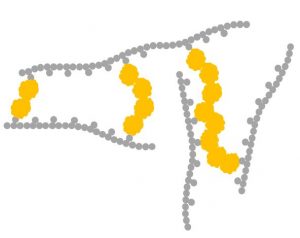Bio-based binders for molded cellulose fibers
Natural binders are inexpensive, biodegradable, environmentally friendly and renewable, but usually form weaker bonds and slightly harder to apply. The objective of the project is to develop and optimize the process of using various plant polysaccharides as binder for holocellulose fibers and cellulose nanofibrils (CNF). The selected polysaccharides are further functionalized to improve interfacial adhesion […]
Bio-based binders for molded cellulose fibers Läs mer »


